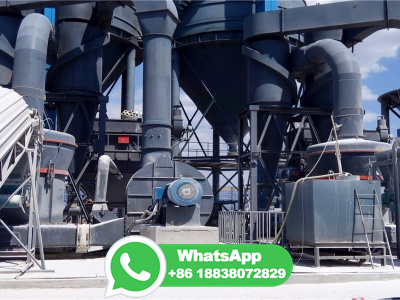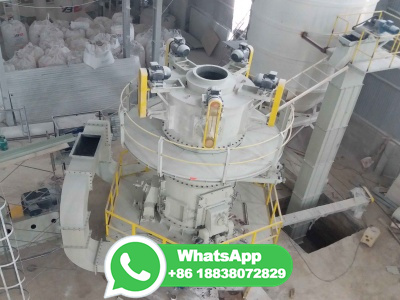
A carbonaceous solid that appears to have passed through an intermediate fluid state when being produced is called a coke. Carbonaceous solids that do not pass through such a fluid state during formation are chars. These definitions apply to carbonization processes using any feedstock, including biomass, petroleum, and polymers.
WhatsApp: +86 18203695377
A lowemission coking process, which combines the oxyfuel combustion with staged combustion strategy, was adopted to limit nitrogen oxides (NO x) emission and realize carbon dioxide (CO 2) combustion process of coke oven gas (COG) in O 2 /CO 2 atmospheres is numerically investigated in the combustion chamber of the coke oven. The velocity distribution, temperature fields ...
WhatsApp: +86 18203695377
As shown in Fig. 1, the coking process is needed to convert coal into the valuable fuel product of coal coke ... Additionally, approximately tons of coking coal is needed to produce 1 ton of steel and is accompanied by approximately tons of CO 2 emissions [19, 20]. Hence, substituting coal coke as a source of energy in a cupola ...
WhatsApp: +86 18203695377
Process description of fluid coking. Fluid coking is a thermal cracking process consisting of a fluidized bed reactor and a fluidized bed burner. A flow diagram is shown in Figure 5. Vacuum residue is preheated and fed to a scrubber that operates at 370°C above the reactor for coke fine particle recovery.
WhatsApp: +86 18203695377
Coking. Despite the development of catalytic cracking processes, coking processes have survived as a popular refining process all over the world to refine the heavy end of crudes or heavy oils through carbon rejection as coke. Coking is the most severe thermal process used in the refinery to treat the very bottomofthebarrel of crude oil, ...
WhatsApp: +86 18203695377
Fig. 1, Fig. 2 illustrate the schematic of the coking process and the heating process respectively. The properties of 1/3 coking coal used in the experiments are shown in Table, 10 g crushed 1/3 coking coal with a particle size of less than mm is charged into the cylindershaped crucible.
WhatsApp: +86 18203695377
Cleaning should not materially affect the ratio of a coal's heattocarbon content because the process removes primarily noncombustible impurities. ... mostly in Appalachia, supply coking coal. The coke industry, which has been declining, accounted for only 4 percent of total coal consumption in 1992, down from 9 percent in 1980.
WhatsApp: +86 18203695377
1. Coal washing: The raw coal is cleaned before coking, in order to reduce the ash contained in the coal and remove other residues. 2. Coal blending: It is a process in which coal of different types of gas, fertilizer, coke and lean is prepared according to a certain proportion, and is naturally loaded into the coke oven from the top of the ...
WhatsApp: +86 18203695377
Coal to Make Coke and Steel. Metallurgical coal (also called "met" coal) is an important raw material used in the steelmaking process, although very small amounts of coal (relative to the amount used for electricity) are needed. The coal used to make steel is heated without air in an oven at temperatures of as much as 2,060°F (1,125°F ...
WhatsApp: +86 18203695377
The EFs of VOCs from different stages of the coking process were calculated, and coal charging exhibited the highest EFs of VOCs, followed by the flue gases from combustion of coke oven gas, wastewater treatment, coke pushing and chemical byproduct recycling. The VOCs in emissions differed by coking process.
WhatsApp: +86 18203695377
the amount of volatile matter released in the process of coal coking may be related to the. activity of oxygen containing functional groups in coal, that is, volatile matter is easier to.
WhatsApp: +86 18203695377
Metallurgical coke is an important raw material for pig iron production in the blast furnace. During this process the coke undergoes severe mechanical, thermal and chemical stresses. One of these is the CO2 gasification which may lead to a decisive mechanical weakening of the lump coke by increased carbon burnoff.
WhatsApp: +86 18203695377
Coking. Coking coal is an essential raw material for the production of iron and steel. Coke is a solid carbonaceous residue formed from coking coal (a lowash, lowsulphur bituminous coal, also known as metallurgical coal), which is used in make steel and other iron products [].Coke is produced by burning coal at temperatures up to 1000 °C in the absence of oxygen to remove the volatile ...
WhatsApp: +86 18203695377
Coking is a refinery unit operation that upgrades material called bottoms from the atmospheric or vacuum distillation column into highervalue products and, as the name implies, produces petroleum coke —a coallike material.
WhatsApp: +86 18203695377
Evaluating the coking coal quality from coal structure thermal transformation was crucial to control the coking process. The coal quality indices of ash composition, volatile matter, element distribution and caking indices were redefined based on the coal structural characteristics.
WhatsApp: +86 18203695377
To improve coal quality and reduce coal blending costs, we need to predict the coke quality and optimize the coal blending scheme. In this paper, we propose a modeling and optimization method based on the characteristics of the coal blending and coking process. First, we establish a model for predicting coke quality from coking petrography data ...
WhatsApp: +86 18203695377
Distribution of mercury in coal washing and coking processes (converted to 1 kg of mercury contained in raw coal fed to coal preparation plant) Clean coals derived from the coal washing process are used for coke production in coke ovens. The coking process is conducted in temperatures above 1000 °C.
WhatsApp: +86 18203695377
Coke chemical companies often have a deficit of coals of particularly valuable grades, the coking coals. This work studies the opportunity of producing petroleum coking additives using delayed coking during heavy petroleum residue processing. Experiments for the production of a carbon material were conducted using three kinds of heavy petroleum residues of the oil refinery plant Ltd Kinef: the ...
WhatsApp: +86 18203695377
Coke is the pyrolyzed and annealed product of coking coal which plays a vital part in the BF ironmaking process. As a hard and porous material, coke acts as structural support media against the weight of the ferrous burden materials charged to the BF and provides pathways that facilitate gas and liquid transport through the BF.
WhatsApp: +86 18203695377
The coking time is determined by the coal mixture, moisture content, rate of underfiring, and the desired properties of the coke. When demand for coke is low, coking times can be extended to 24 hours for blast furnace coke and to 48 hours for foundry coke. Coking temperatures generally range from 900° to 1100°C (1650° to
WhatsApp: +86 18203695377
In the molecular structure model of coking coal, the methane adsorption amount is N/uc at K; it decreases to N/uc at K. Regarding the methane adsorption amount in the molecular structure model of coking coal under different temperature and pressure conditions, Zhu et al. built a coking coal model of the Chiyu coal mine ...
WhatsApp: +86 18203695377
The volatile fraction release process of these coking coals was examined by a thermogravimetric analyzer at the same rate of heating up, and analyzed the relationships between the average pore size, average wall thickness of coke and the volatile fraction release, flow characteristics of coking coal.
WhatsApp: +86 18203695377
In the combustion process, the coal in the coking chambers is carbonized in a hermetic environment and becomes coke. The exhaust gas is discharged into a neighboring regenerating chamber. Two vents in each combustion chamber were selected for manual temperature measurements. Both vents handle the outflow from the chamber and are located close ...
WhatsApp: +86 18203695377